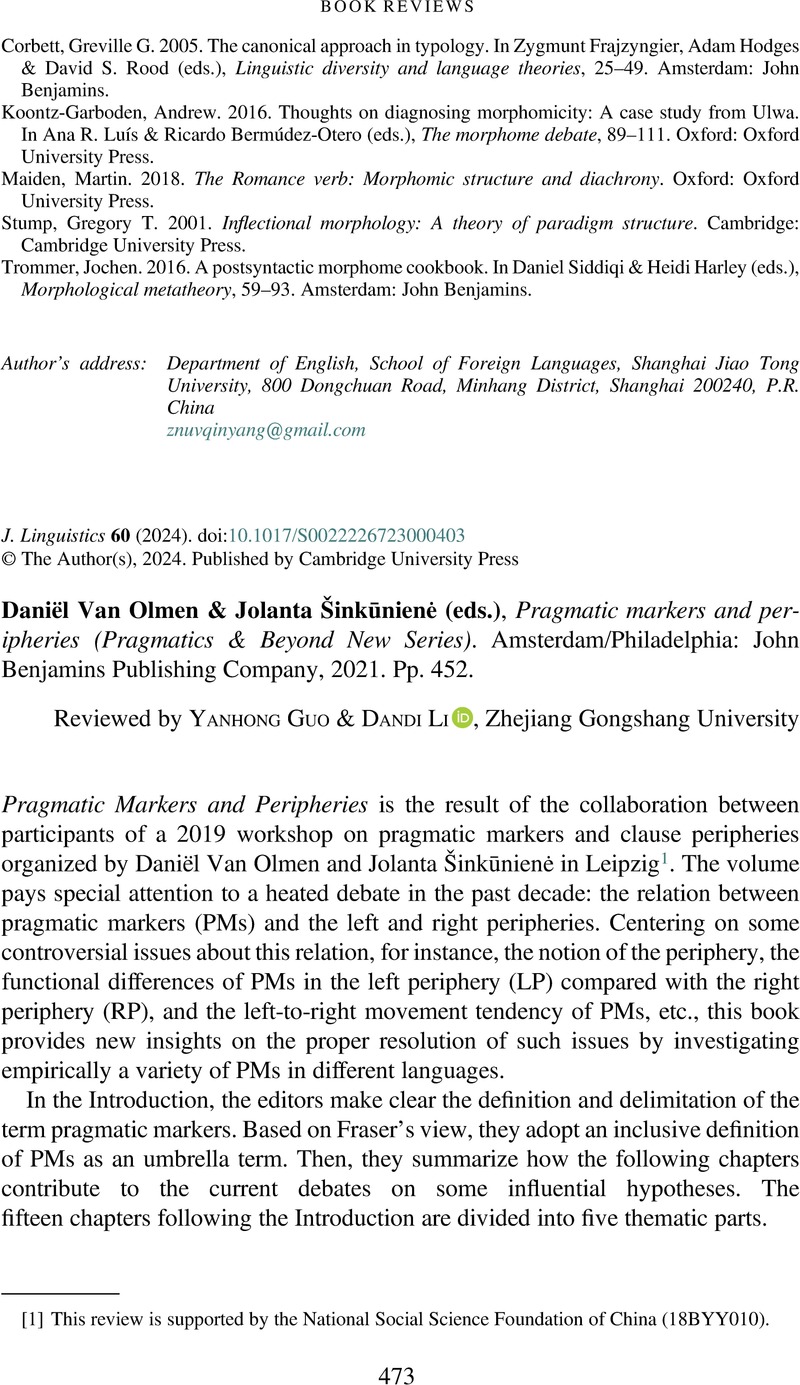No CrossRef data available.
Article contents
Daniël Van Olmen & Jolanta Šinkūnienė (eds.), Pragmatic markers and peripheries (Pragmatics & Beyond New Series). Amsterdam/Philadelphia: John Benjamins Publishing Company, 2021. Pp. 452.
Review products
Daniël Van Olmen & Jolanta Šinkūnienė (eds.), Pragmatic markers and peripheries (Pragmatics & Beyond New Series). Amsterdam/Philadelphia: John Benjamins Publishing Company, 2021. Pp. 452.
Published online by Cambridge University Press: 05 February 2024
Abstract
An abstract is not available for this content so a preview has been provided. Please use the Get access link above for information on how to access this content.

- Type
- Book Review
- Information
- Copyright
- © The Author(s), 2024. Published by Cambridge University Press
References
REFERENCES
Beeching, Kate, Degand, Liesbeth, Detges, Ulrich, Traugott, Elizabeth Closs & Waltereit, Richard. 2009. Summary of the workshop on meaning in diachrony. Presented at the Conference on Meaning in Interaction, Bristol.Google Scholar
Beeching, Kate & Detges, Ulrich. 2014. Introduction. In Beeching, Kate & Detges, Ulrich (eds.), Discourse functions at the left and right periphery: Crosslinguistic investigations of language use and language change, 1–23. Leiden: Brill.CrossRefGoogle Scholar
Chen, Jiajun. 2018. (Inter)Subjectification at the left and right periphery: Deriving Chinese pragmatic marker Bushi from the negative copula. Language Sciences 66, 83–102.CrossRefGoogle Scholar
Couper-Kuhlen, Elizabeth & Selting, Margret. 2018. Interactional linguistics: Studying language in social interaction. New Nork, NY: Cambridge University Press.Google Scholar
Onodera, Noriko O. 2014. Setting up a mental space: A function of discourse markers at the left periphery (LP) and some observations about LP and RP in Japanese. In Beeching, Kate & Detges, Ulrich (eds.), Discourse functions at the left and right periphery: Crosslinguistic investigations of language use and language change, 92–116. Leiden: Brill.CrossRefGoogle Scholar
Sohn, Sung-Ock & Kim, Stephanie. 2014. The interplay of discourse and prosody at the left and right periphery in Korean: An analysis of kuntey ‘but’. In Beeching, Kate & Detges, Ulrich (eds.), Discourse functions at the left and right periphery: Crosslinguistic investigations of language use and language change, 221–249. Leiden: Brill.CrossRefGoogle Scholar
Traugott, Elizabeth Closs. 2012. Intersubjectification and clause periphery. English Text Construction 5.1, 7–28.CrossRefGoogle Scholar
Traugott, Elizbeth Closs & Dasher, Richard. 2002. Regularity in semantic change. Cambridge: Cambridge University Press.Google Scholar



